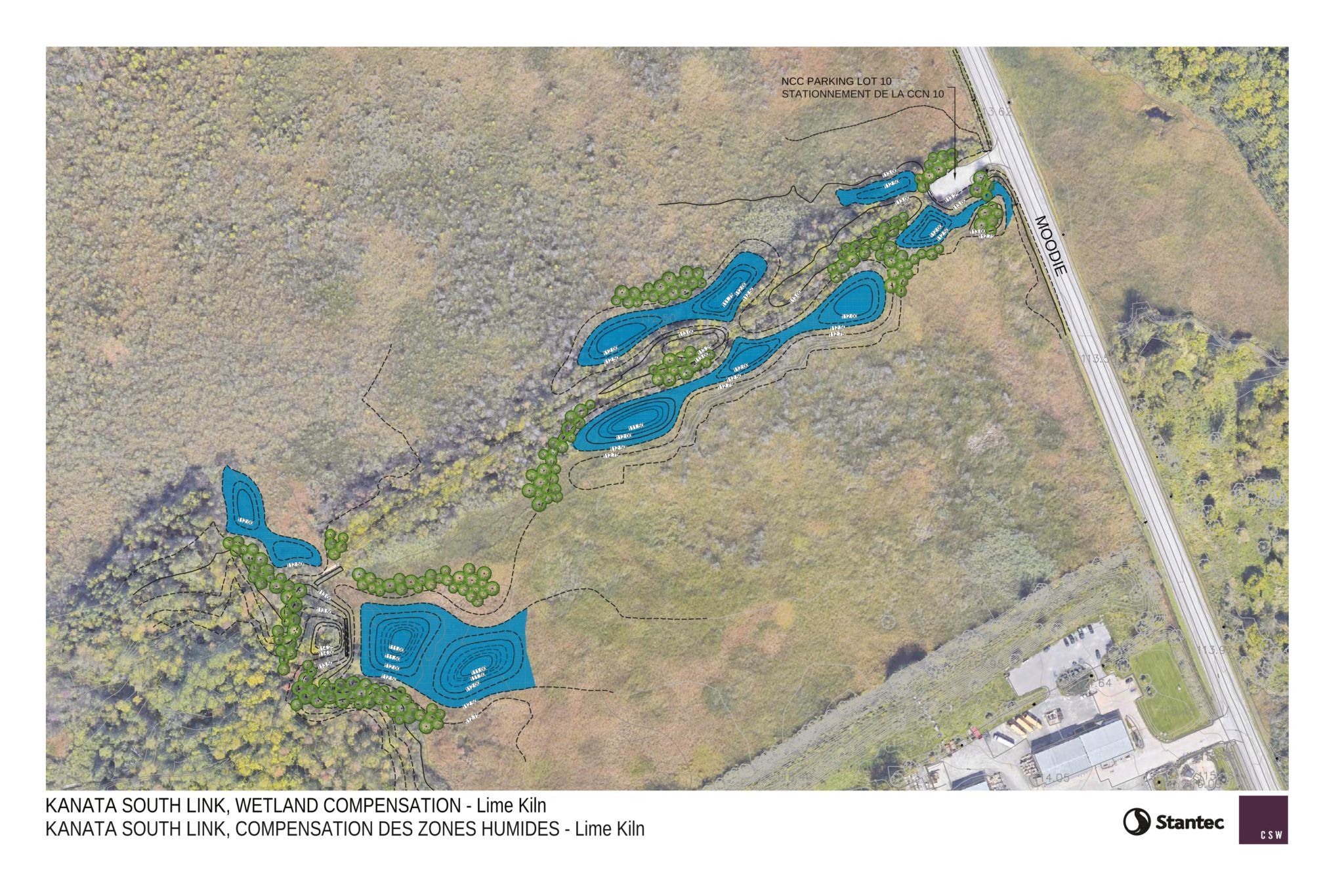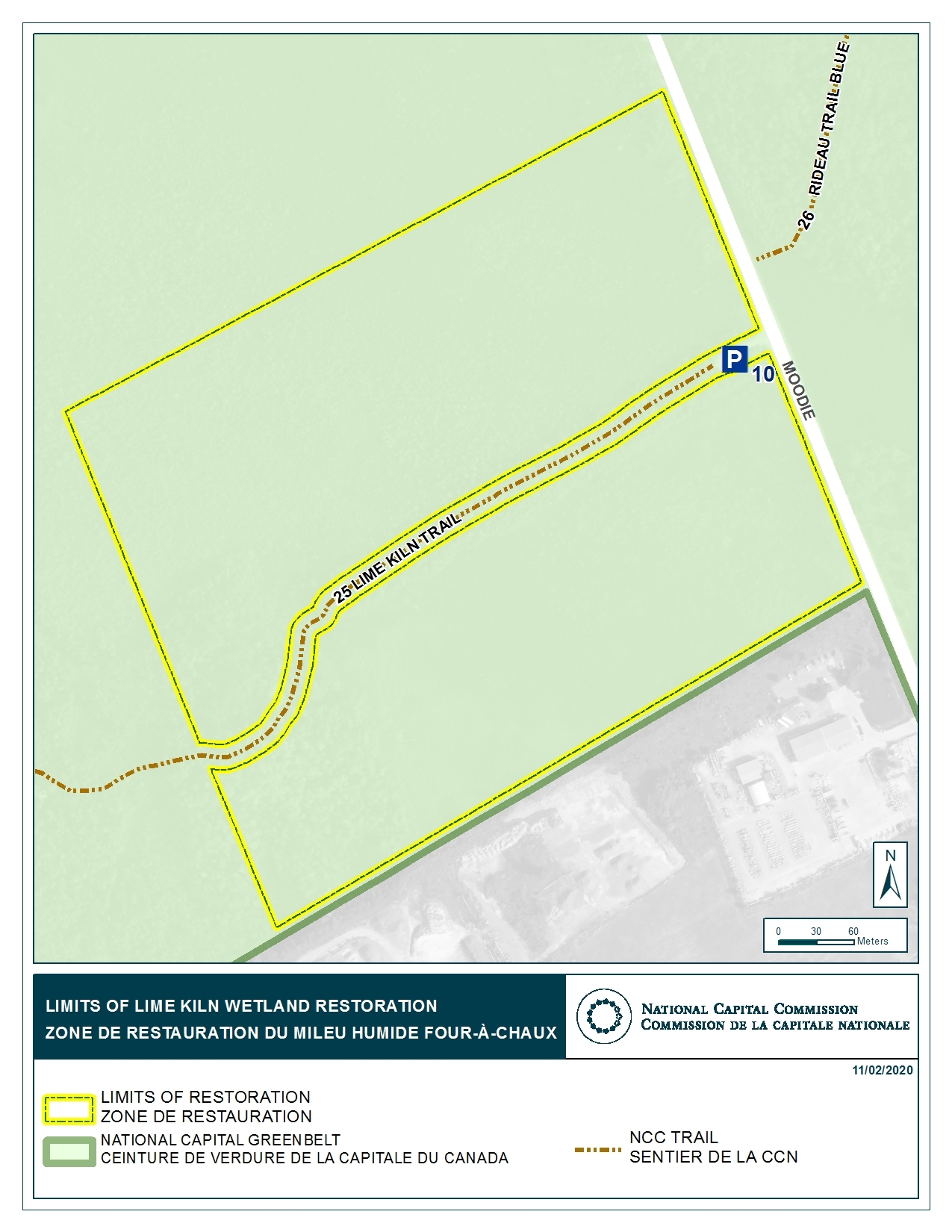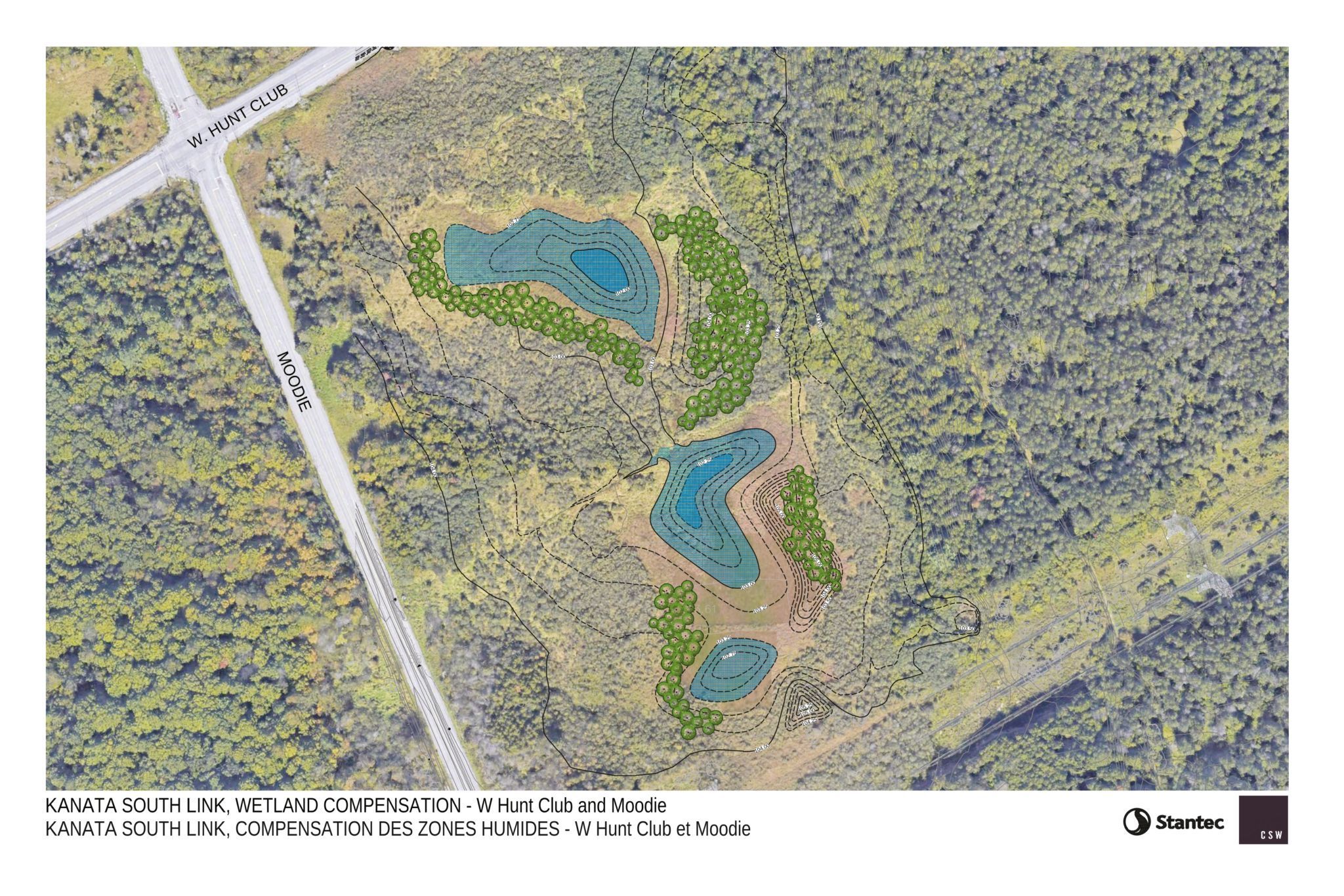It is the result of close collaboration with the City of Ottawa to implement best practices to reduce road mortality and improve ecological connectivity, while meeting Ottawa’s transportation needs.
About the project
To accommodate rapid growth in Ottawa’s west end, the City is widening sections of roads through the Stony Swamp sector of the Greenbelt. For over five years, the NCC has worked closely with the City to ensure the least possible intrusion on this important conservation area. The City’s project now includes a series of measures that limit and offset the impacts of the work.
Sustainable road design
Fences and wildlife crossings help protect wildlife, and connect habitats separated by roads. Data from road mortality surveys found that many turtles and snakes, many of which are species at risk, were being hit on the road near the wetlands. Sustainable improvements to the road include the following:
- retaining walls in wetlands to reduce the road footprint
- wildlife exclusion fencing
- wildlife crossings
- measures to improve water quality
These improvements benefit both humans and wildlife.
Wetland construction
Two wetlands have been created off-site to offset the impacts of road construction. Work include the following:
- the removal of invasive species such as European common reed, European buckthorn and purple loosestrife
- the improvement of overwintering habitat for turtles at risk
- tree planting
- landscaping enhancement
Overall, this project has a positive impact on the Greenbelt. It enhances habitat diversity, increases habitat for species at risk, particularly the Blanding’s turtle, and results in expanded wetland.
This project is consistent with the policy of no net loss of habitat, identified in the NCC’s Greenbelt Master Plan, which supports the federal policy on wetland conservation.
Process and timeline
The project started in 2013, and is now completed.
- The NCC identified four possible wetland compensation sites.
- In February, the NCC approved the Kanata South Link road-widening project.
- Two wetland sites were selected by consensus, and designs were developed and approved.
- In May, the NCC approved the wetland compensation project.
- Winter: Removal of a limited number of trees, with clearing and excavation work targeting invasive species such as European common reed, European buckthorn and purple loosestrife.
- Fall: Excavation to create ponds, tree planting, landscaping enhancement and environmental monitoring.
About the site
Road mortality results showed some species at risk, such as Blanding’s turtles and milk snakes, were being struck by vehicles along this road. It is predicted that wildlife fencing will reduce these numbers by 70 percent.
Wetland construction will take place at two Stony Swamp locations near the Lime Kiln Trail (P10), as well as south of West Hunt Club Road and east of Moodie Drive (south of P11).



